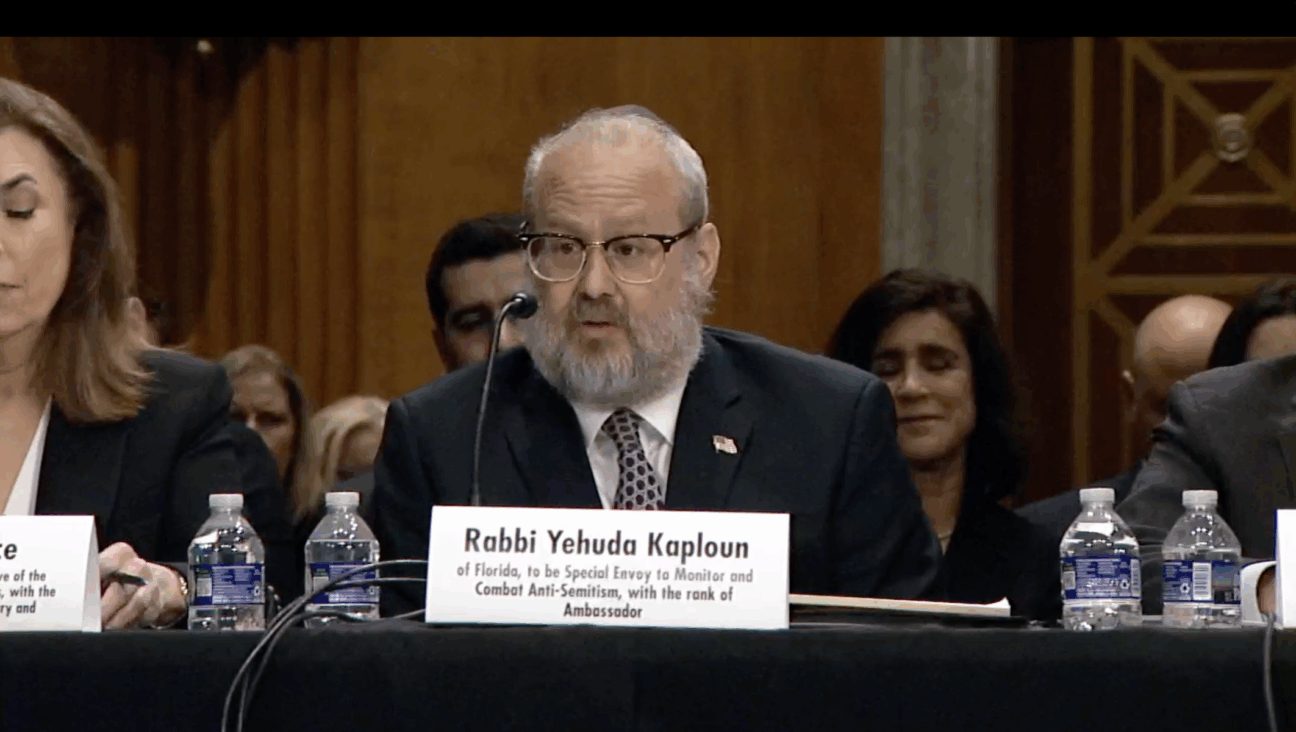Is Ivanka Trump Good for the Jews?
In 1926, when writer Ellin Mackay, heiress to the Comstock Lode mining fortune, fell in love with famed Jewish songwriter Irving Berlin, her Catholic father raged that they would marry “over my dead body.” When the couple eloped, he disinherited his daughter. After their civil ceremony, Ellin Berlin was dropped from the social registry — although her sister, who dated a Nazi and wore a diamond swastika, remained a member in good standing.
How times have changed.
On October 25, The New York Times announced the marriage of Jared Kushner, whose family name graces a New Jersey Orthodox Jewish day school, to Ivanka Trump, glamorous daughter of business tycoon and ubiquitous public personality Donald Trump. This unlikely union seemed so unremarkable that it didn’t even merit the “Vows” spotlight the Times frequently reserves for couples from divergent or unique backgrounds. Instead, the Times announcement straightforwardly noted: “Rabbi Haskel Lookstein is to officiate,” leaving it for those who read between the lines to understand that Ivanka had undergone a traditional religious conversion to Judaism prior to the Orthodox nuptials.
In part, the relative nonchalance that greeted this high-profile pairing reflects a sea-change over the last century in attitudes toward Jews in America: Marrying a Jew — even becoming a Jew, as Ivanka has done — no longer means removing oneself from high society. On the contrary, becoming a Jew may mean joining one of contemporary American society’s most enticing cultural streams.
Today, many non-Jews are familiar with and attracted to Jewish humor, food, music, literature, art and films, and also to Jewish social ideals and religious rituals. One thinks of “faux mitzvahs” in which pubescent non-Jewish boys and girls celebrate their coming of age, of non-Jewish weddings at which glasses are reportedly broken and cries of “mazel tov” are heard, and also of the participation of Christian friends in Jewish Sabbath and holiday meals.
Non-Jews now enjoy Passover Seders held in churches, and also at the homes of Jewish friends. An article in The Wall Street Journal by a reporter from its Boston bureau, for example, described a “Cambridge-style Passover Seder, BYOP, Bring Your Own Place Setting,” where only three of the 13 participants were Jewish. New York Times columnist Maureen Dowd recently reported that she had tried for years to get invited to her late colleague William Safire’s annual Seder.
The transformation of attitudes toward Jews and Judaism, however, is part of a larger shift in how Americans relate to ethnic and religious difference in general. An important juncture in those changes occurred during the late 1960s, when political and social trends transformed the landscape, and ethnic distinctiveness became something to celebrate, rather than to melt away. The growing acceptance of difference eventually evolved into a multicultural ethos that supports the juxtaposition of diverse backgrounds within individual lives and households.
To be sure, alongside the many opportunities it affords Jews, this evolving American reality also presents considerable challenges for the Jewish community. Many wonder how we can preserve a sense of Jewish peoplehood when traditional boundaries that had long defined ethnic Jewishness are becoming permeable and blurry.
Older American Jews — whether they are secular or religiously observant, communally affiliated or disconnected — often articulate a keen consciousness of Jewish peoplehood, highlighted by a clearly constructed “us” and “them.” That dichotomy, however, is increasingly difficult to maintain.
But there is another view of what constitutes ethnic identity. This view emphasizes ethnicity’s distinctive content — including language, values, behavior and culture — rather than the porous and shifting boundaries between ethnic groups. This tends to be how younger American Jews understand identity. In a marked change from the past, they embrace the particulars of Jewish culture but reject the “us and them” worldview of their elders. Jews in their 20s say they feel a strong attachment to Jewish ethnicity but tend to see Jewish music, food, books, comedy and cultural performance, family styles and religious rituals as their primary ethnic expressions. Unsurprisingly, this latter view of ethnicity tends to be more hospitable to Jews-by-choice.
Converts, of course, are not a monolithic group. They include activist, accommodating and ambivalent Jews — not unlike those born into the ethnicity. But in my 2006 study “Choosing Jewish: Conversations About Conversion” (American Jewish Committee), I discovered that those Orthodox, Conservative, Reform and Reconstructionist converts who are Jewishly active and involved identify not only with Judaism as a religion (as previous researchers had insisted) but also with Jewish peoplehood, with ethnic Jewishness. The process of learning and experience that serious converts undergo positions them perfectly to embrace not just Judaism as a religion, but also the cultural content that is nowadays often considered to define Jews as a distinctive people.
For many converts, Judaizing is a process that does not end with the formal conversion. They begin by asking important questions: What does it mean to be Jewish? What kind of Jew will I be? Some are hungry for and pursue intensification of their Jewishness throughout their adult years. The effectiveness of this Jewish enculturation is underscored by the fact that, as a group, converts into Judaism are in most ways statistically indistinguishable from born Jews in the strength and extensiveness of their Jewish connections.
Today in America, identifying with Jewishness is voluntary for Jews-by-descent as well as Jews-by-choice. The spiritual journeys of Jewishly passionate converts, supported by ongoing education, expressed through an embrace of a shared culture and a commitment to a redefined concept of peoplehood, may provide models for Jews of all backgrounds. Just as Jews-by-choice like Ivanka Trump have confronted Jewish existential questions, Jews of all shades must struggle with the meanings that can bind them to each other and to Jewish destiny.
Sylvia Barack Fishman is chair of the Department of Near Eastern and Judaic Studies at Brandeis University and co-director of the Hadassah-Brandeis Institute. She is the author, most recently, of “The Way Into the Varieties of Jewishness” (Jewish Lights, 2007).















